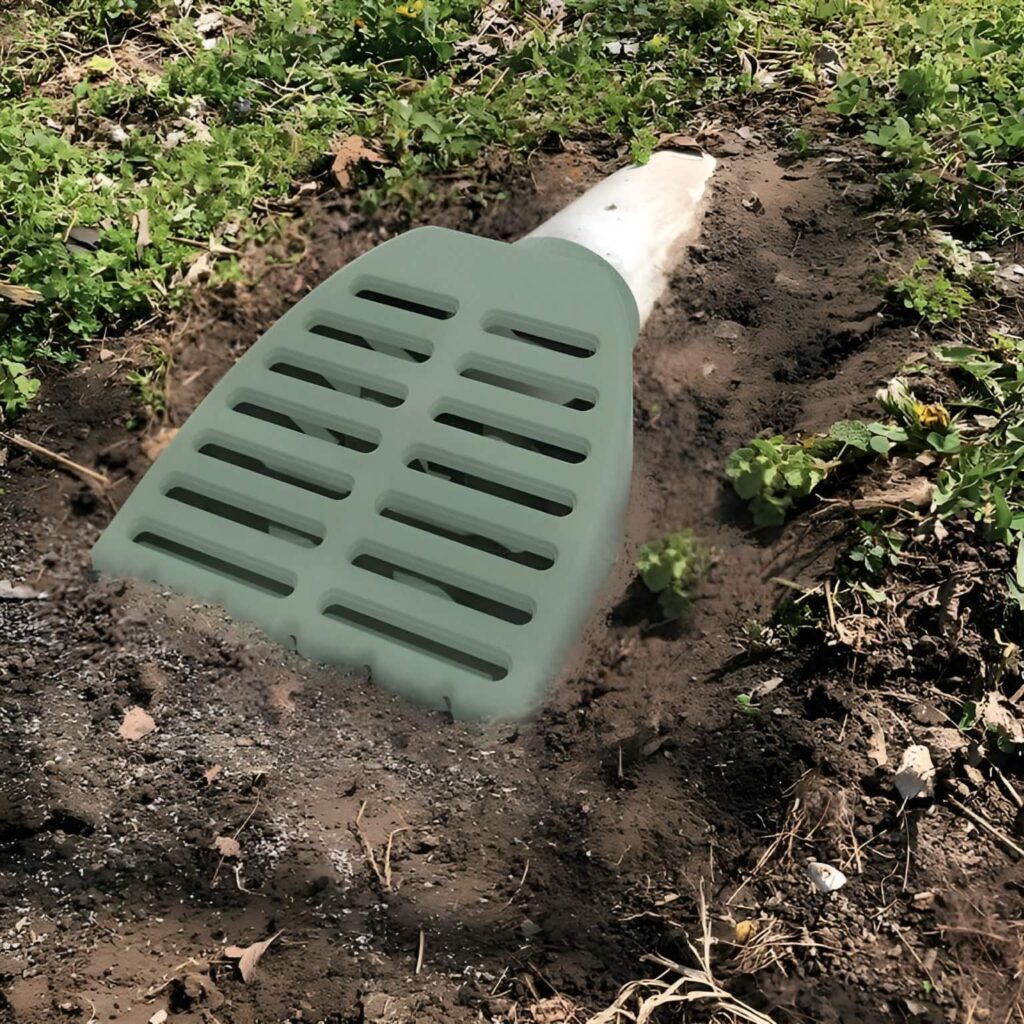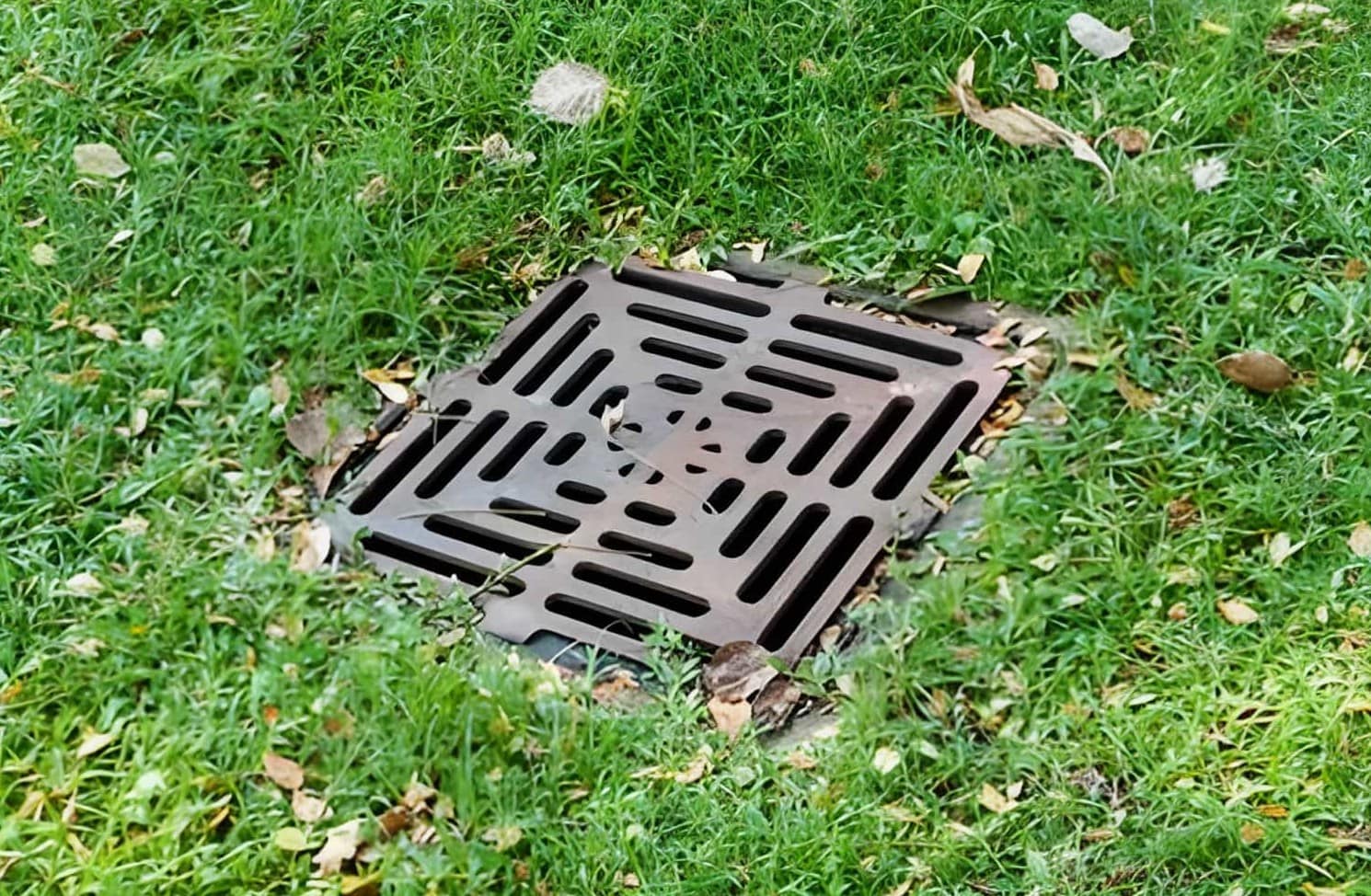Poor drainage can turn your beautiful lawn into a soggy mess. Standing water creates problems that go far beyond just muddy shoes. Finding the best drainage pipe for yard applications is essential for managing water flow and protecting your home from serious damage. The right drainage system not only solves immediate water issues but also prevents costly foundation problems and landscape erosion.
Why an Effective Drainage System is Important for Your Yard
A good drainage solution does more than just move water away from problem areas. It protects your entire property and creates a healthier outdoor space for your family.
Protecting Your Home’s Foundation from Costly Water Damage
Water pooling near the foundation of your home can cause major problems. Excess water seeps into cracks and weakens the structure over time. A proper drainage system moves water away from the home before it causes expensive foundation repairs. When drainage issues become serious, professional leak detection and repair services can help identify and fix problems before they cause major damage.
Preventing Soil Erosion and Landscape Washouts
Heavy rain and water runoff can wash away your topsoil and damage your landscape. Without good water drainage, you’ll lose valuable soil and watch your plants suffer. The right drainage pipe system keeps your yard stable during storms.
Eliminating Standing Water, Pests and Unhealthy Lawn Conditions
Standing water creates perfect breeding grounds for mosquitoes and other pests. It also causes waterlogging that kills grass and plants. Surface drains and other yard drainage solutions prevent these problems by moving rainwater away quickly.
Creating a Healthier, More Usable Outdoor Space for Your Family
Good drainage means you can use your yard even after heavy rain. No more muddy patches or water damage to worry about. Your lawn stays healthy and your family can enjoy the outdoor space year-round.
Types of Drainage Pipes and Solutions for Yards
Different drainage problems need different solutions. Understanding your options helps you find the right system for your specific needs.
Perforated vs. Solid Drainage Pipes: What’s the Difference?
When to Use Perforated Pipes to Collect Groundwater
A perforated pipe has small holes that allow water underground to enter the system. These pipes work great for french drain systems that need to collect water from wet soil. The holes let groundwater flow into the pipe and get carried away.
When to Use Solid Pipes to Move Water Away
Solid pipe works best when you need to move water from one place to another without collecting more along the way. Use solid pipes to connect different parts of your drainage system or to carry water to a final outlet.
Common Materials for Garden Drainage Pipe
PVC: The Durable, Smooth-Wall Option
PVC pipe lasts a long time and resists damage from roots and chemicals. The smooth walls help water flow quickly without getting blocked by sediment. PVC sewer pipe costs more but offers better long-term value.
Corrugated Pipe: The Flexible, Cost-Effective Choice
Using corrugated plastic pipes saves money on most projects. Corrugated pipe bends easily around obstacles and works well in many different types of installations. The ridged surface can collect silt over time.
Comparing Flexible vs. Rigid Pipes
Flexible pipes bend around trees and other obstacles without extra fittings. Rigid pipes like PVC need more planning but provide better water flow. Choose based on your yard’s layout and your budget.
French Drains and Other Ground Drain Solutions
What is a French Drain and How Does It Work?
A french drain uses a perforated pipe buried in a gravel-filled trench. Water flows into the pipe through the holes and gets carried away from problem areas. This system works great for managing rainwater and preventing flooding.
To install a french drain, you dig a trench with a slight slope toward the outlet. The pipe goes in the bottom of the trench, surrounded by gravel. The whole system can be covered with landscaping to hide it.
Other Popular Ground Drain Options
- Catch Basin: Collects surface water through a grate and sends it to underground pipes
- Channel Drain: A linear drain that handles water runoff from driveways and patios
- Dry Well: Underground chamber that holds excess water until it soaks into the soil
How to Choose the Best Drainage Pipe for Your Yard
The best drainage pipe for yard use depends on your specific situation. Consider these factors before making your choice.
Assessing Your Yard’s Specific Drainage Needs
Understanding Your Soil Type
Clay soil holds water longer and may need more drainage help. Sandy soil drains quickly but might need different pipe placement. Test your soil to understand how water moves through your yard.
Evaluating Your Yard’s Slope and Grading
Water flows downhill, so check your yard’s natural slope. Areas where water collects need the most attention. A good slope helps any drainage system work better.
Identifying Water Flow Patterns and Problem Areas
Watch where water goes during heavy rain. Look for areas with water damage or where grass won’t grow. These spots show you where to focus your drainage efforts.
Sizing and Placement of Your Pipes Drain System
Pipe Diameter Recommendations
- 4-inch pipes work for most residential areas
- 6-inch pipes handle heavy water flow better
- Smaller pipes may clog more easily with sediment
Where to Install Pipes for Maximum Effectiveness
Place your drainage pipe system where water naturally collects. Connect to existing systems like gutters and downspouts when possible. Make sure water has somewhere to go at the end.
Home Drainage Installation: Best Practices

Good installation makes the difference between a system that works and one that fails. For complex installations or when working near your home’s foundation, consider professional pipe installation services to ensure proper setup and long-term reliability.
The Installation Process: From Trenching to Discharge
- Plan your route from problem areas to the outlet
- Dig a trench with proper slope (1% grade minimum)
- Install the pipe with holes facing down for french drains
- Surround with gravel for better water collection
- Cover and restore the surface
DIY vs. Professional Installation: Pros and Cons
Many drainage systems are easy to install for handy homeowners. Simple projects like connecting a downspout to a drain pipe can be DIY-friendly. Complex systems or those near your home’s foundation need professional help.
Common Installation Mistakes to Avoid
- Not creating enough slope for proper water flow
- Using the wrong pipe type for the job
- Forgetting to plan for periodic cleaning and maintenance
- Installing pipes too shallow (they should be installed underground)
Integrating Your Drainage System with Home and Garden Design
Your drainage system doesn’t have to be an eyesore. Smart planning helps it blend with your landscape.
Blending Your Garden Drainage Pipe with Landscaping
Hide pipes and trenches with plants, mulch or decorative stones. Many different types of ground cover work well over drainage areas. Just avoid plants with deep roots that might damage the pipes.
Maintenance and Upkeep for Your Drainage System
Check your system twice a year for clogs or damage. Clean out any sediment that builds up in catch basins or channel drains. Watch for signs that water isn’t flowing properly, like new wet spots or slow drainage. If you notice persistent clogs or drainage issues, professional drain cleaning services can help restore proper water flow.
When drainage problems persist despite regular maintenance, it may indicate deeper issues with your system. Professional sump pump services can provide additional protection against water damage, especially in areas prone to flooding or where groundwater levels are high.
Summary
The right drainage pipe for yard use solves water problems and protects your property. A simple french drain or a complex system with multiple types of drains can work well with proper planning and installation. Address drainage problems quickly to prevent water damage and create a healthier outdoor space.
Consider your soil type, water flow patterns and budget when choosing your system. Some projects are easy to install yourself, but don’t hesitate to call professionals for complex work. A good drainage system is worth the extra cost when it protects your home and landscape.
Frequently Asked Questions (FAQs)
What is the best type of drainage pipe for a residential yard?
PVC pipe offers the best long-term performance, while corrugated pipe provides a cost-effective solution for most homeowners.
What is a French drain and how is it different from other drains?
A french drain collects groundwater through a perforated pipe in a gravel-filled trench, while surface drains collect water from the ground level.
How deep should a garden drainage pipe be buried?
Most drainage pipes should be buried 18-24 inches deep to prevent damage and maintain proper function.
Can I install a drainage system for my home myself?
Simple systems are DIY-friendly, but complex installations or work near foundations require professional help.
How do I know if I have a yard drainage problem?
Look for standing water, muddy areas that won’t dry, water damage to plants or flooding risks during storms.
How often does a home drainage system need maintenance?
Check your system twice yearly and perform cleaning as needed to prevent clogs and maintain efficient water collection.







